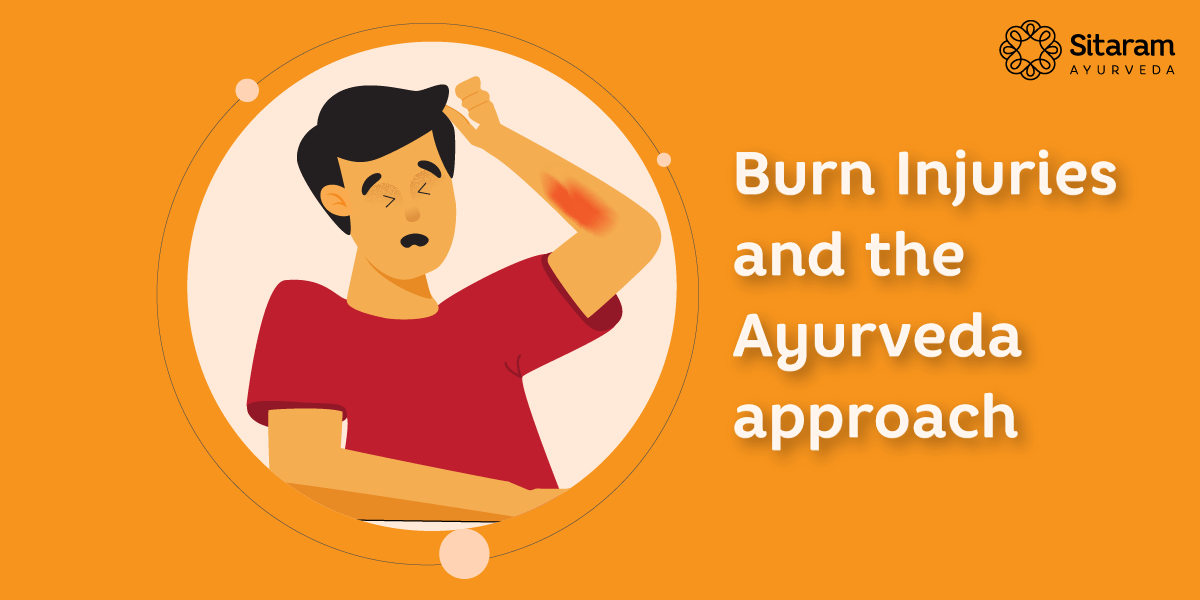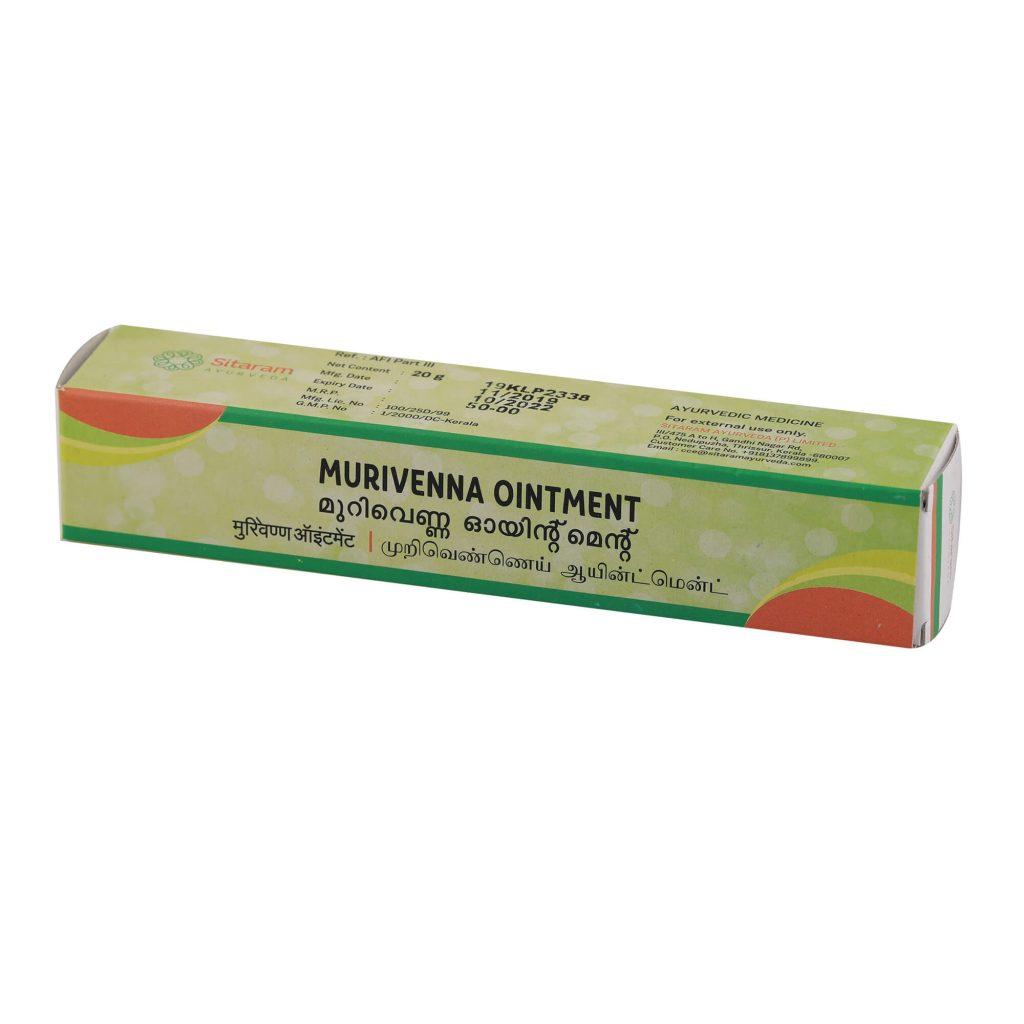Burn Injuries and The Ayurveda approach

All of us regularly come across burns in daily life – for ourselves or family members. Children are especially susceptible to burns. Also, children under 4 and seniors over 60 years of age are more susceptible to complications from burns. Sometimes burn injuries also can cause long-lasting issues like scarring, psychological trauma, PTSD, etc.
Types of Burns
- Thermal Burns: Burns caused by direct contact with a hot object.
- Scalding: Is the most common type of thermal burn,caused by hot liquids like boiling water, cooking oil or steam.
- Hot objects like iron box, cooking pans also cause thermal burns.
- Direct contact with fire, fireworks etc., are the next cause of thermal burn.
- Radiation burns: Are caused by thermal radiations.
- Sunburn is the most common type of radiation burn.
- Chemical Burns: Are caused by strong acids, acids etc.
- Electrical Burns: Coming in contact with live electrical wires or leaking appliances can cause burns, along with other issues.
- Cold Burns or Frostbite: Is caused by freezing. The effect is the same as a burn injury.
Severity of Burns:
The severity of burns is noted by ‘degrees’ and extent of burn on the body.
| Degree | Layers of skin Affected | Signs and Symptoms | Healing |
| First Degree (Superficial Burn) | Epidermis (Outermost skin layer) | Pain, Redness, Swelling | Heals Fast usually within a few days. |
| Second Degree (Superficial and deep partial-thickness burns) | Epidermis and Dermis (Outermost and subsequent layer of skin) | Redness, blister, yellow or white discoloration of the area. Painful. | Healing may take some weeks. There is a chance of secondary infections. |
| Third degree burn (Full thickness burns) | Both epidermis and whole dermis are affected. | Blackened or whitened burnt area.Pain is less or absent as nerve endings are damaged. | Healing can take months, often causes scarring and surgical interventions may be required. |
| Fourth Degree Burn | Extends through the entire skin and underlying tissues of fat, muscle or even bone. | Black and charred. | Healing is impossible. Amputation of the burned part is required. |
Burns are also classified as minor, moderate and major according to severity and extent in the body:
Minor Burns: Are mostly first degree burns, and second degree burns which are less than 7.5 cms. In adults, a burn is considered minor only if it is less than 10% of the total body surface area. In children and senior citizens it should be less than 5% of body area.
Moderate Burns: A burn is considered moderate when its between 10 – 20% of total body surface area in adults and between 5-10% in children and old. And only 2-5% of the total burn injuries should be third degree.
Major Burns: When the burn exceeds 20% of total body surface area in adults (more than 10% in children and old), it’s a major burn.
Second degree burns having more than 3 inches width, and also second degree burns on the hands, feet, face, groin, buttocks or over a major joint is considered as major.
First Aid for Burns:
As in other accidents, first aid can prove to be the life saving intervention in burn injuries. Let us see what we can do immediately for Burns.
First Aid For Major Burns:
- Consider that the burn is major when in doubt.
- Call medical care without hesitation if you are suspecting a major burn.
- If someone is on fire, make him / her roll on the ground.
- Wrap with a thick cloth or blanket.
- Do not try to remove melted clothing stuck to the skin.
- Do not try to open blisters.
- If sterile or clean cloth is available, cover the burnt area.
- Protect the burnt area from pressure or friction.
- Elevate the burnt area above heart level if possible.
- Give CPR if necessary.
For Minor Burns:
- Soak or run cool water over the area, for 10 – 30 minutes.
- Apply Murivenna ointment over the area.
Murivenna Ointment:
- The very versatile Kerala traditional ayurvedic medicine ‘Murivenna’ converted to ointment form for convenient usage.
- Murivenna is a powerful anti-inflammatory, wound healing and topical analgesic.
- Murivenna ointment prevents infection and pus formation as many of the herbs used for its production have antimicrobial action.
- Murivenna ointment reduces inflammatory reaction and swelling.
- It promotes faster wound healing by improving vascularisation and formation of new cells.
- It has a good analgesic effect and helps to reduce pain from burns and other injuries.
- The many murivenna oil benefits are preserved and made easily dispensable by the formulation of murivenna ointment.
- The versatility of murivenna benefits make murivenna ointment suitable also for other conditions like pain from arthritis, cuts and muscle injuries.
Ensure you have murivenna ointment in your first aid kit at home.

MURIVENNA OINTMENT 20 GM
Murivenna Ointment is useful in Traumatic swelling and pain; Burns, cuts and bruises; Inflamed and painful haemorrhoids, fistula, fissure; Peptic ulcer; Inflammation of gut and bowel.


 Sign In
Sign In Cart
Cart
informative and brilliant